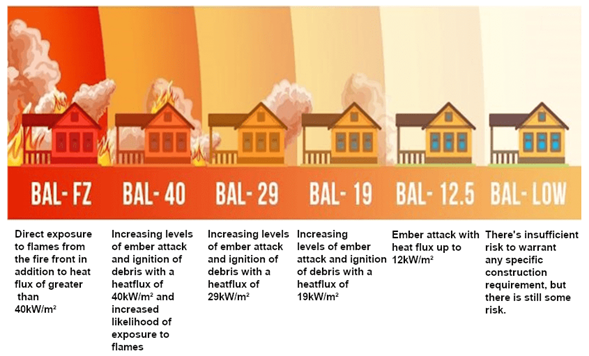
Fire Resistance in Timber Structures: Safety Standards, Treatments, and Design Considerations
March 28, 2025
Author: Michael Safari
Why Is Fire Resistance Important in Timber Structures?
Fire resistance in timber structures refers to the ability of timber to withstand fire exposure while maintaining structural integrity. In Australia, where bushfires pose significant risks, timber buildings must comply with AS 3959 BAL (Bushfire Attack Level) standards to ensure fire safety in residential construction.
This guide covers fire resistance ratings, fire-retardant treatments, building regulations, and fire-safe timber design strategies.
How Is Fire Resistance Measured in Timber Structures?
Timber fire resistance is quantified using fire ratings (e.g., 30, 60, or 90 minutes) that indicate how long the structure can withstand fire exposure before failure.
Key Factors Affecting Timber Fire Resistance:
- Char Rate – Timber develops a char layer that insulates underlying wood, delaying combustion.
- AS 1530 Testing Standards – Measures how timber reacts to fire, determining its fire performance rating.
- Fire Resistance Levels (FRL) – Specifies stability, integrity, and insulation during a fire.
Properly treated and designed timber structures can meet fire safety regulations while maintaining structural performance.
Fire-Retardant Treatments for Timber
To comply with AS 3959 BAL standards, timber used in bushfire-prone areas requires fire-resistant treatments.
Best Fire-Resistance Treatments for Timber:
- Fire-Retardant Coatings
- Paints & varnishes delay ignition and slow fire spread.
- Commonly used for exterior timber cladding & exposed wood structures.
- Chemical Pressure Treatments
- Timber is impregnated with fire-retardant chemicals to enhance resistance.
- Used for high-risk areas where untreated timber isn’t allowed.
- Engineered Wood Products
- Cross-Laminated Timber (CLT) & Laminated Veneer Lumber (LVL) have enhanced fire resistance.
- Their layered structure chars predictably, protecting the core layers.
Applying fire-retardant solutions increases timber durability while maintaining aesthetic appeal.
Building Code Requirements for Fire Resistance in Timber
Australian building codes regulate fire-resistant construction in timber buildings:
- AS 3959 (Bushfire Attack Level - BAL) Standards – Specifies fire safety measures for bushfire-prone zones.
- AS 1530 (Fire Testing Standards) – Defines fire resistance levels (FRL) for construction materials.
- National Construction Code (NCC) – Outlines fire-resistant design and material compliance for residential structures.
Following these regulations ensures that timber buildings meet fire safety standards and protect occupants from fire-related risks.
How Architects Design Fire-Resistant Timber Structures
Architects incorporate fire safety measures into timber buildings by:
Key Fire-Safe Design Strategies:
- Strategic Material Selection – Using fire-treated timber & engineered wood.
- Compartmentalization – Creating fire-resistant zones to limit fire spread.
- Fire-Resistant Barriers – Installing fire-rated walls, floors, and ceilings.
Smart fire-conscious designs improve safety and compliance in timber construction.
Challenges & Limitations of Timber in High-Fire-Risk Areas
While fire-resistant treatments improve timber safety, some limitations remain:
- Combustibility – Even with treatments, timber is still a flammable material.
- Maintenance Requirements – Fire-retardant coatings may require reapplication over time.
- Building Restrictions – In high-risk bushfire zones, local regulations may limit timber use.
Using timber in fire-prone areas requires a careful balance between structural engineering, fire resistance, and compliance.
Final Thoughts: Enhancing Fire Resistance in Timber Buildings
To ensure fire safety in timber structures, builders and engineers should:
- Use fire-treated timber & engineered wood products.
- Follow AS 3959 & AS 1530 fire resistance standards.
- Incorporate passive fire protection design techniques.
For expert timber construction & fire-resistant building solutions, working with structural engineers ensures compliance and safety.
📢 Need Fire-Safe Timber Engineering Solutions?
At Fundament, we specialize in fire-resistant timber construction and compliance with AS 3959 BAL standards. Contact us today to ensure your timber structure meets Australian fire safety regulations!

